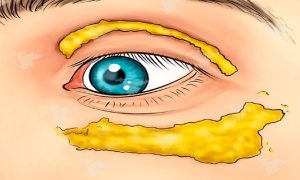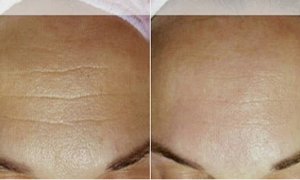Peptic ulcers are open sores on the lining of the esophagus, stomach, or duodenum, and are a common and highly unpleasant health issue.
It is estimated that 11-14% of all men and 8-11% of women will develop peptic ulcers at some point in their life, and these are some of the most common symptoms:
- Abdominal pain
- Heartburn and chest pain
- Indigestion
- Nausea
- Vomiting
- Indigestion
- Bleeding, and dark, almost black, stool
- Belching
The most common risk factors and causes of peptic ulcers include:
- Helicobacter pylori (H.pylori) infection
- Regular use of conventional non-steroid anti-inflammatory drugs (NSAIDs), like acetylsalicylic acid (Aspirin, Bayer) or ibuprofen (Advil, Nurofen, Motril) without taking additional protection for the stomach and guts
- Smoking
- Alcohol
- Unhealthy eating habits, and excessive consumption of spicy and fried foods, and processed foods
- Smoking
- Radiotherapy
Their main cause is H.pylori infection, which is responsible for 90% of all duodenal ulcers and close to 80% of stomach ulcers.
However, cabbage juice has been found to be the most powerful natural way to heal stomach ulcers. It has been used for over seven decades, after a doctor from San Francisco, Garnett Cheney published a brilliant article named: “Rapid Healing of Peptic Ulcers in Patients Receiving Fresh Cabbage Juice” in 1949.
He conducted a study which involved thirteen subjects between 26 and 72 years of age, who were diagnosed with gut ulcers bearing a “crater” which was defined on an X-ray. The craters were classified as small (3 to 5mm in diameter), medium (6 to 8mm), and large (9 to 21mm).
They followed a specific dietary regimen, drank one liter of green cabbage juice daily, divided into 5 servings of 200ml, and were encouraged to use salt, pepper and tomato juice.
Also, three of the participants received juice portions containing 75 percent of cabbage and 25 percent of celery.
After five months, these were the results:
- 11 out of 13 subjects had no craters on X-ray after a course of 6-9 days of the therapy
- One patient with a large ulcer crater exhibited curative signs in 14 days, and another one with a large duodenal ulcer with cap deformity healed it in 23 days
- The average healing time was recorded to be 9 days
- One subject with three small gastrojejunal ulcers and another one with two such gastric ulcers healed their guts upon the second gastroscopic examination following the cabbage juice therapy
Garnett Cheney also pointed out that the cabbage juice mustn’t be cooked, but it should be eaten raw.
Moreover, he claims that cabbage juice contains a substance, an anti-ulcer factor, which he proposed to be called vitamin U. Nowadays, it is known as S-methylmethionine, and it has been found to improve the production of mucin, the primary component of the mucus secreted by the mucous membranes, which protects the surface of the esophagus, stomach, and guts, and prevents the formation of ulcers.
Also, it has potent cell-protecting properties and balances local immunity.
As peptic ulcers and skin lesions are similar in terms of tissue damage, vitamin U accelerates the healing of wounds. It also inhibits the formation of adipocytes (fat cells) on a molecular level, treats depression, and its antioxidative, anti-inflammatory, and antifibrotic properties prevent and treat kidney damage.
Cabbage juice is also rich in another anti-ulcer agent, sulforaphane, which is a potent bactericide that kills Helicobacter pylori and prevents peptic ulcers.
This potent drink is also high in glutamic acid, a non-essential amino acid, which serves as a neurotransmitter of nerve impulses involved in learning and memory. Its deficiency in the body can lead to leaky gut syndrome and a poor immune system function.
Cabbage juice is also abundant in vitamin C, which is a powerful antioxidant that neutralizes free radicals, and prevents gastric ulcers and duodenal ulcers
A single glass of cabbage juice can deliver significant amounts of vitamin K, A, E, and C, phosphorus, iodine, B-family vitamins, phytonutrients, enzymes, calcium, iron, potassium, glutamine, and antioxidant compounds. Therefore, it offers numerous other health benefits as well, as follows:
— It has an impressive nutritional profile that strengthens the immune system
— Cabbage juice effectively lowers LDL cholesterol levels and improves heart health
— It is rich in anthocyanins and vitamin K. which improve the function of the brain and lower depositions of plaque in the neural pathways, preventing neurodegenerative disorders
— This natural juice is abundant in unique antioxidants, including sulfuric compounds and isocyanate, which prevent oxidative stress and carcinogens from negatively impacting cells
— Cabbage juice regulates the function of the thyroid and the production of hormones
— Cabbage juice has diuretic properties that detoxify the body and boosts the function of the kidneys and the liver
— Its high potassium content lowers blood pressure, since this mineral is a potent vasodilator, that lowers the strain and tension in the blood vessels and arteries, and thus reduces the risk of atherosclerosis, heart attack, and stroke
— Since it is rich in antioxidants, including vitamin C and E, cabbage juice improves the health and appearance of your skin, and treats wrinkles, blemishes, and reduces the signs of aging
— It is low in calories, but rich in nutrients that help weight loss
Here is how to make your homemade cabbage juice to treat stomach ulcers and reap all these benefits:
Ingredients:
- 1 small head of green cabbage
- 6 ribs of celery
- 1-inch piece of ginger root
- 3 carrots
Instructions:
Rinse the ingredients, cut them, and mix them in the juicer.
Then, divide the juice into 5 servings, and drink them throughout the day.
Repeat daily for 7-21 days, but in most cases, you will experience the initial relief in 2-3 days.






















